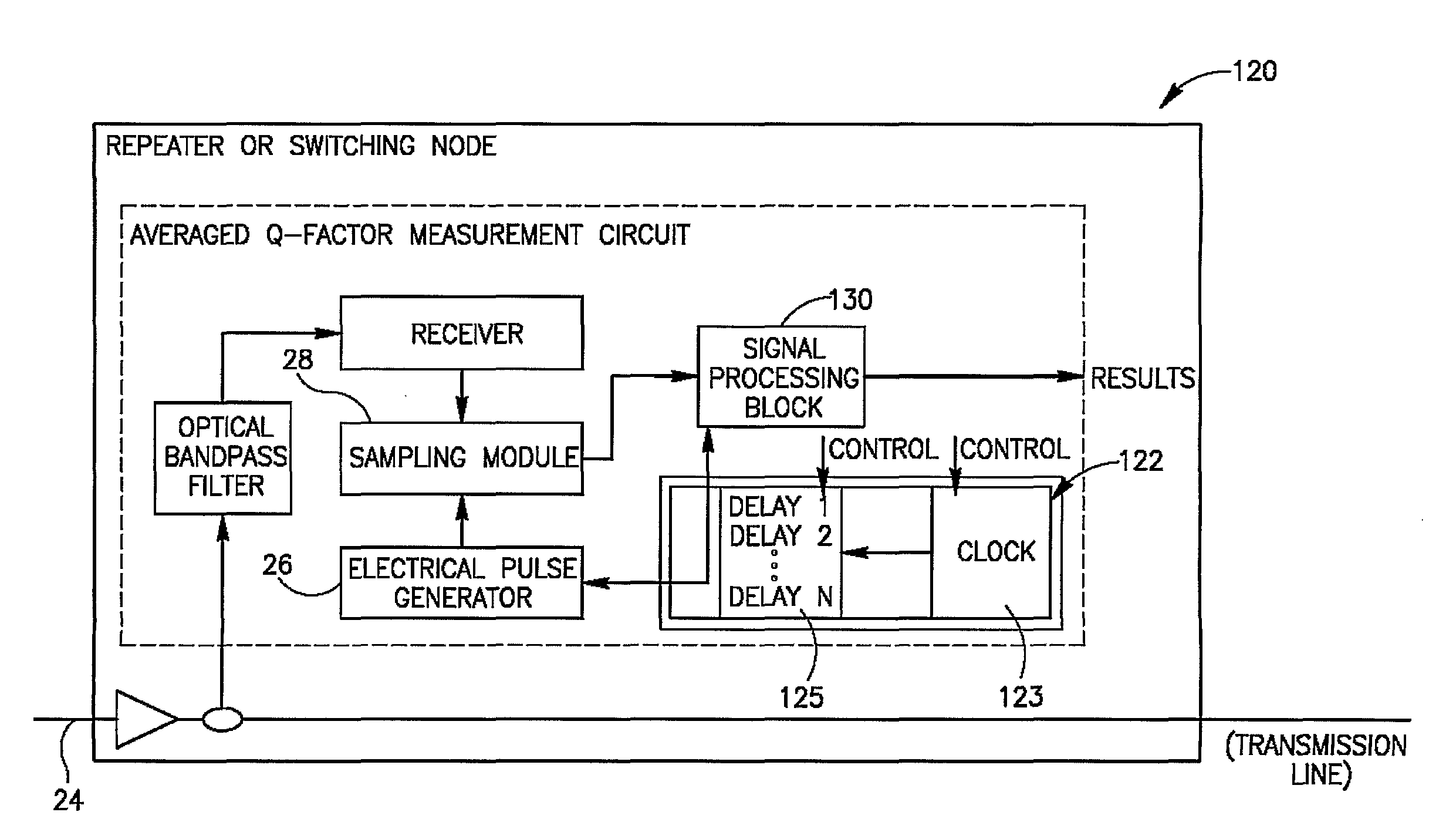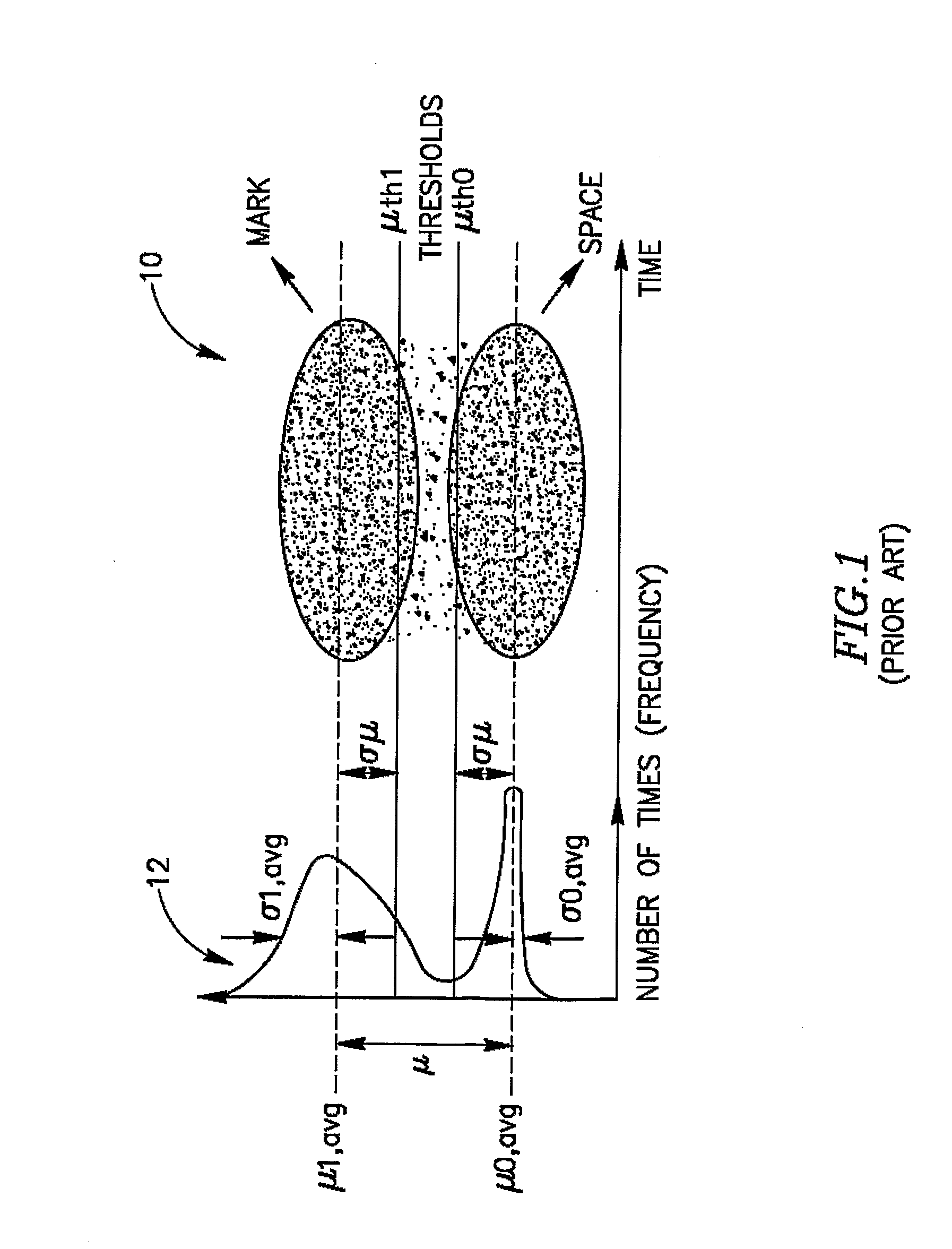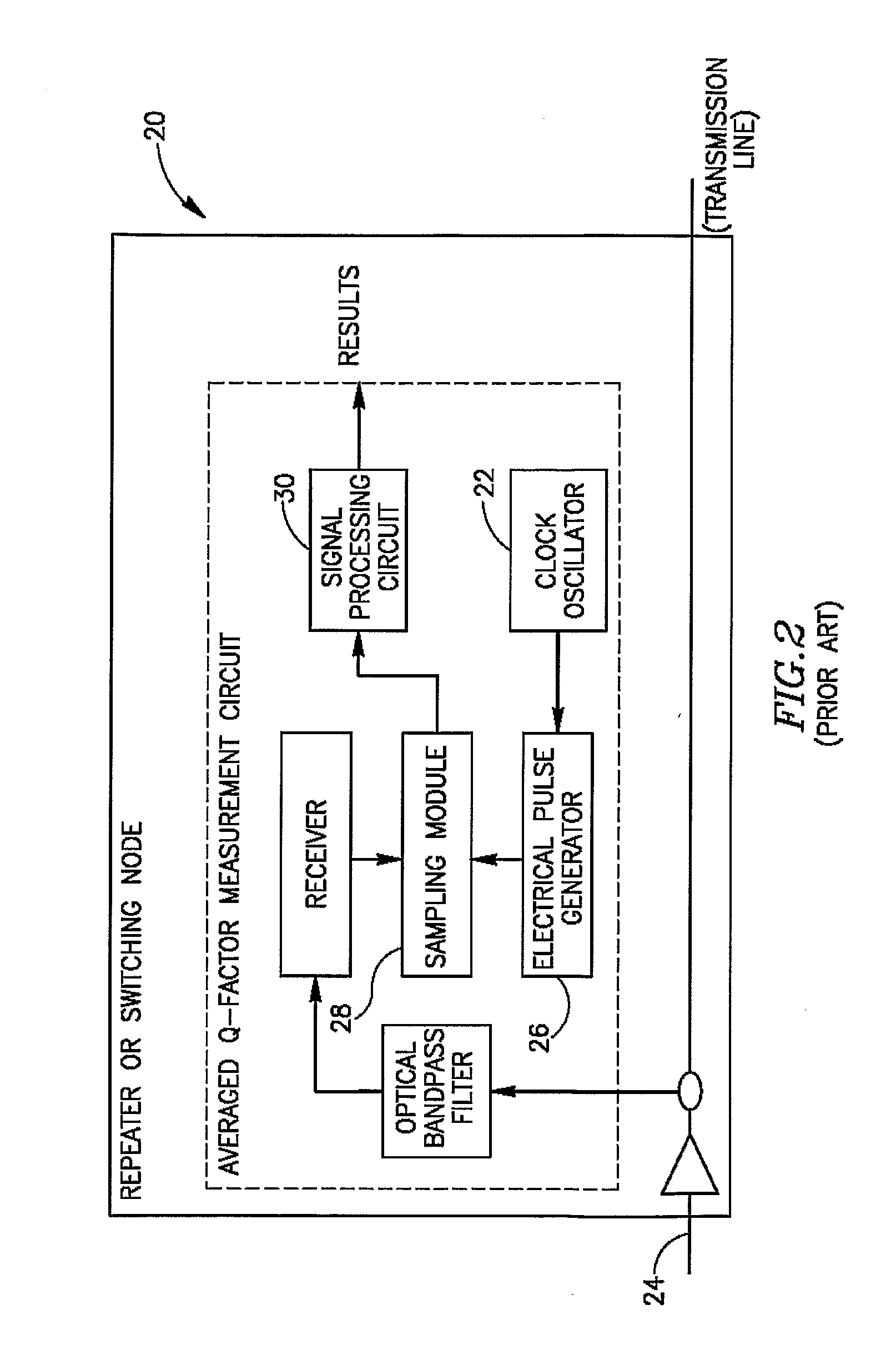Method and System For Measuring Average Q-Factor in Optical Networks
a technology of optical networks and q-factors, applied in the field of optical network average value determination, can solve the problems of complex equipment, inability to accurately determine the value of quality factors, and inability to accurately measure the accuracy of optical networks, etc., and achieve the effect of simple and rather accura
- Summary
- Abstract
- Description
- Claims
- Application Information
AI Technical Summary
Benefits of technology
Problems solved by technology
Method used
Image
Examples
Embodiment Construction
[0059]FIGS. 3a, b, c can be understood as a general illustration of a method known as asynchronous sampling.
[0060]FIG. 3a shows a binary optical signal 30 which, while being initially a digital signal with distinctive power levels of “1” and “0”, has become an analog-like quasi-sinusoidal signal upon passing an optical link and suffering from such effects as chromatic dispersion, non-linearity, etc. Let the bit rate X of the binary signal 30 is quite high, (say, measured in Gb / s). Asynchronous sampling of such a signal is proposed to be done by sample pulses having much lower bit rate Y. It should be noted that equipment for sampling optical signals at low bit rates is significantly simpler and cheaper than analogous equipment working at modern high bit rates. In this drawing, the bit rate of the sample pulses is shown only twice as low (see circles 32 indicating the timing of the sample pulses with respect to the diagram 30 of the binary optical signal). Random asynchronous samplin...
PUM
 Login to View More
Login to View More Abstract
Description
Claims
Application Information
 Login to View More
Login to View More - R&D
- Intellectual Property
- Life Sciences
- Materials
- Tech Scout
- Unparalleled Data Quality
- Higher Quality Content
- 60% Fewer Hallucinations
Browse by: Latest US Patents, China's latest patents, Technical Efficacy Thesaurus, Application Domain, Technology Topic, Popular Technical Reports.
© 2025 PatSnap. All rights reserved.Legal|Privacy policy|Modern Slavery Act Transparency Statement|Sitemap|About US| Contact US: help@patsnap.com



